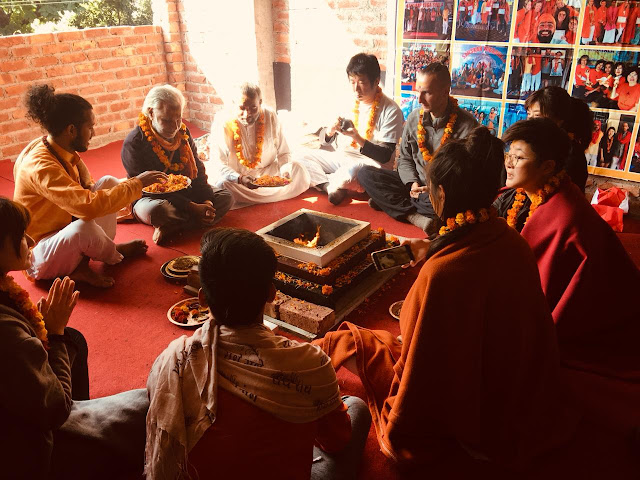What is Pranayama?
Pranayama :
A Yogic
Breathing Exercise
 |
| Traditional Yoga in Rishikesh, India |
Pranayama
(prana = energy + Yama = control) is a type of meditation technique that involves various ways of controlling the breathing, with the goal being to withdraw one's senses from the outside world
The names that come under textual literature are unanimously given as PRANA, APANA, VYANA, SAMANA, UDAAN as the five flow mechanisms envisioned based in different parts of the physical manifestation of this body.
PRANA has the access to whatever we are, which we know about what we are knowing about and that too which we otherwise would never know about. PRANA is giving us the life-giving air and mixed oxygen for the energy and stamina for this physical self. At the same time, the same PRANA moves in the microscopic cell anywhere within our body were within each of them is there as flow and motion of the various constituents and systems which even exist in these unseen and unfelt systems as well. Therefore PRANA moves in the rhythms of the sea breeze where it blazes and sounds like a continuous enraging and speeding snore as we breath in this life-giving air and also exhaust it while exhaling. Such is the capacity and immense versatility of this life force constantly moving within this physical self.
The lungs and the breathing process
The organs of respiration consist of two lungs, one on either side of the chest and the air passages that lead to them. The lungs are located in the upper thoracic cavity of the chest, one on each side of the median line, and are separated from each other by the heart, the greater blood vessels, and the larger air tubes. The lungs are spongy, porous, and their tissues are very elastic, containing innumerable air-sacs or alveoli. Each lung consists of an apex and a base. The base is directed towards the diaphragm, the muscular septum, the dividing wall between the chest and the abdomen.Number of pranayamas
‘Number’ refers to the number of times the pranayama is performed, and this is long or short according to the period of time it is practiced. Just as water, thrown on a hot pan shrivels upon all sides as it is being dried up, so also air, moving in or out ceases its action by a strong effort of restraint in kumbhaka, and stays within. The Yogic student should slowly take the number of pranayamas up to 80 in one sitting. He should have four sittings: in the morning, noon, evening and midnight, and should practice thus 320 pranayamas in all.Thanks & Regards
Team Sanskar YogaShala


Comments
Post a Comment